#designing transport infrastructure
Explore tagged Tumblr posts
Text
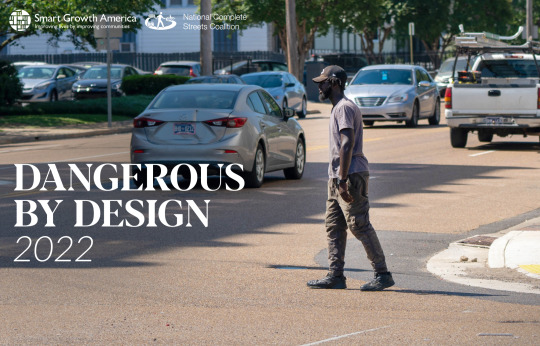
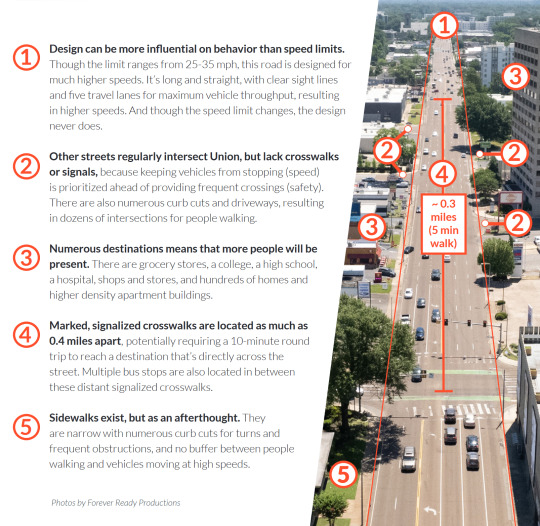





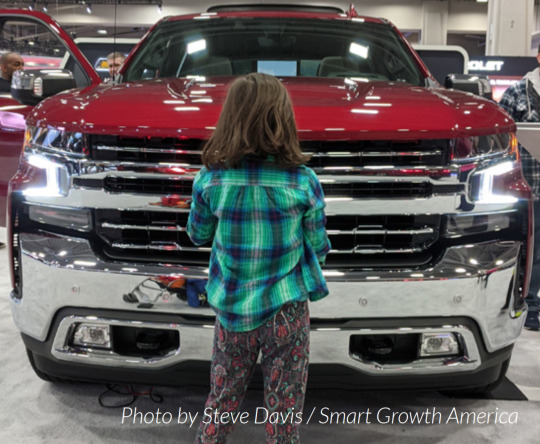

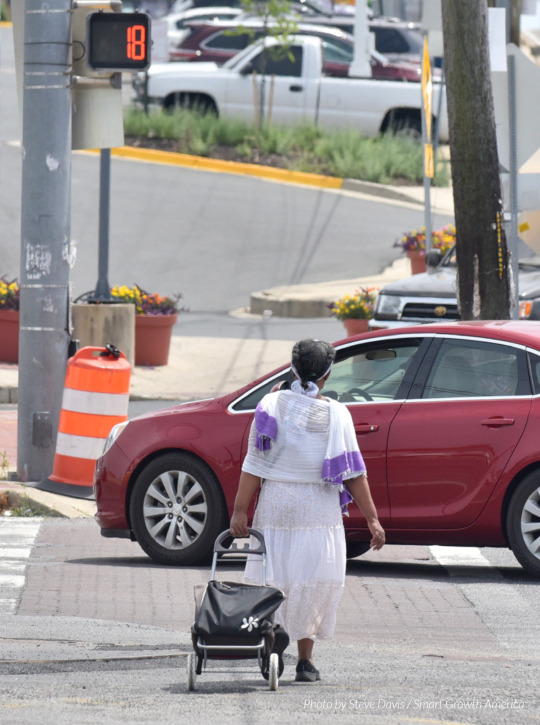
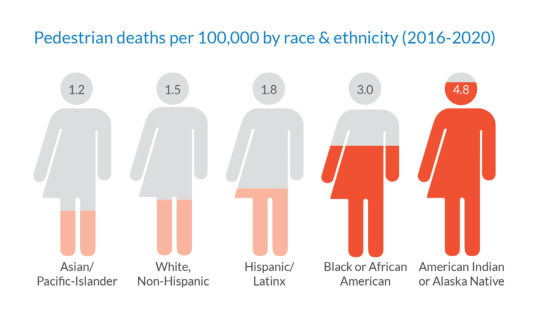

America's Roads: Dangerous by Design
#the link leads to the pdf that i got all these pics + graphics from#very interesting and informative and written in very clear and easy to understand language#please read please reblog this is something im passionate about#mine#pedestrian safety#car centric infrastructure#walkable cities#urbanism#public transportation#urban design
3K notes
·
View notes
Text
I've been thinking about urbanism and about how some people (I'm particularly thinking folks like “the vocal minority of business owners that go absolutely apeshit any time there's a proposal to remove some space from cars in favour of a bike lane, a tram line, a pedestrianised area, etc”) don't seem to really consider anyone outside a car to be a person.
*a city plans to remove some parking spaces to make room for a protected bike lane*
“But how is anyone supposed to get here?!”
*looks at bustling street filled with pedestrians, cyclists, and people riding a tram*
Like, it genuinely doesn't seem to occur to some people that all of those people moving around outside of cars are people. That's how “anyone is supposed to get here”: by way of all of the non-car options, especially those that are actively made safer and easier by the removal or limiting of space for cars. And I don't know what's going on here - whether it's something like classism (only those wealthy enough to drive everywhere matter as people) or simply that car dependency is perhaps so entrenched and unquestioned for some folk that it genuinely doesn't occur to them that getting to a place without a car is (or at least should be) an entirely valid and possible thing to do. It's probably a bit of both. But my god does it drive me nuts when people respond to a new proposal that will dramatically increase the capacity and footfall of an urban space by shifting from emphasising cars to emphasising walking, cycling and public transport with “but how will anyone get here?!”
#and don't even get me started on transport planning that's all about “how many cars can we fit down this road”#rather than “how many PEOPLE can we fit down this road”#urbanism#urban design#urban planning#city planning#infrastructure#transportation#public transport#public transit#pedestrian safety#bike lanes#fuck cars
59 notes
·
View notes
Text
It's taking too long to get safe routes for cyclists in Atlanta.
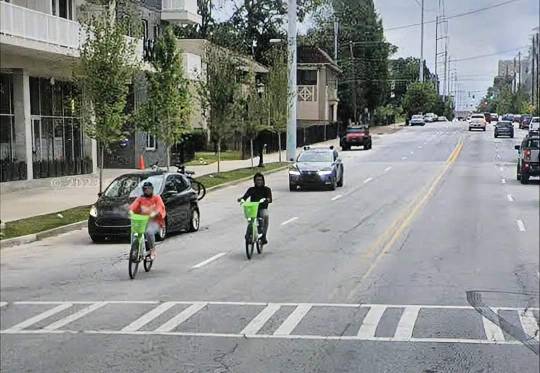
While looking at Google Maps photos of Boulevard (this is a couple of blocks south of North Avenue) I spotted a couple of cyclists grappling with the mixed traffic on this six-lane street.
Why have we not put bike lanes here for safety? This isn't a state road that we don't control. It's a city street that we could change tomorrow.
Why does this mess of a car-sewer still exist in 2024?
On the Atlanta DOT website, the plans for a "complete street" redesign for this part of Boulevard only state "consideration for bike lanes" 🙄 (meanwhile a linked PDF shows a concept with no bike lanes.)

Also, the project start is 2016, and the end is 2028. Ugh. This should not be acceptable by anyone in our city government. Atlanta voters have approved special taxes *twice* in the last 10 years for safer streets.
Aside from the special taxes, Atlanta is a gentrifying city with escalating land values that should be funding improvements with equitable results.
The fact that we still have a major lack of safe routes for cycling in much of the city, especially on major routes like this, is ridiculous.
#atlanta#urbanism#safe streets#street design#cycling infrastructure#bike lanes#urban planning#urban design#transportation planning
10 notes
·
View notes
Text
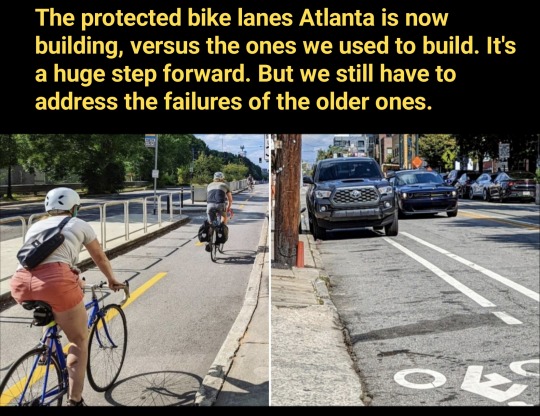
Atlanta is now producing the kind of protected bike lanes we should have been building long ago, as seen here on Bill Kennedy Way. It's good progress.
But we still need to address those older ones (like the unprotected lane on Edgewood Ave) where cars can get in.
If there's truly no room in the width of the street for a fully protected lane, I wonder if we could consider a bold redesign that slows cars dramatically and creates a safe shared space?
26 notes
·
View notes
Text
youtube
More Lanes are (Still) a Bad Thing by Not Just Bikes
#urban planning#city planning#design#transportation#infrastructure#video essays#analysis#lanes#Youtube
6 notes
·
View notes
Text




#train station#travel#public transport#Mobility#railway#calm aesthetic#nature#nature photography#architecture#infrastructure#hightech#atmosphere#design#landscape#urban landscape
2 notes
·
View notes
Photo

What Does a Green City Look Like? Equitable, Connected and Nature-Positive. There is no question that for the world to successfully slow and mitigate the effects of climate change, cities will need to transform. Currently, urban areas consume 78% of the world’s energy supply and produce over 60% of global greenhouse gas emissions. By ... https://thecityfix.com/blog/what-does-a-green-city-look-like-equitable-connected-and-nature-positive/
#Urban Development#active transport#Argentina#Buenos Aires#built environment#bus rapid transit (BRT)#C40#cities for people#climate change#connected#cycling#electrification#equity#erosion#Europe#flooding#ghg emissions#green design#green infrastructure#green space#Indonesia#informal settlements#integrated services#Jakarta#Kigali#Latin America#minibus#mitigation#nature#nature access
2 notes
·
View notes
Text
Trump's Freedom Cities: A New Era of Sustainable Development
By Mr. Fluffernutter In an era of rapid technological advancement, economic shifts, and increasing urban congestion, former President Donald Trump has introduced a bold and ambitious vision—the creation of Freedom Cities. As part of his Agenda 47 policy framework, Trump proposes developing new cities on federally owned land, aiming to redefine urban living through cutting-edge infrastructure,…
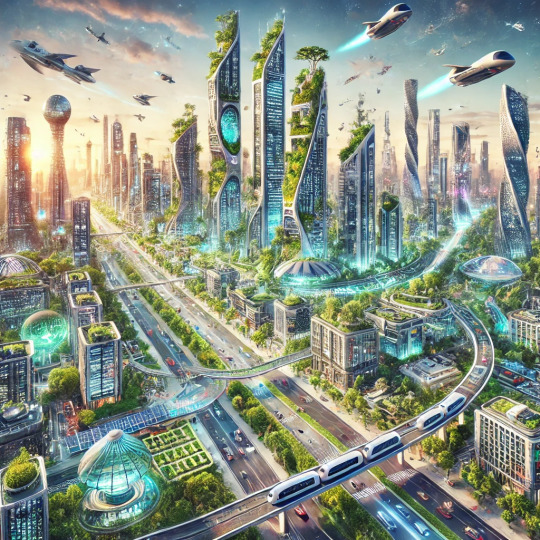
View On WordPress
#advanced city infrastructure#affordable housing solutions#AI-driven city planning#America’s future cities#automation in cities#blockchain smart contracts#Donald Trump urban plan#eco-friendly city planning#economic growth hubs#education#environment#flying cars#Freedom Cities#future city planning#futuristic urban development#green energy cities#Hyperloop transit#innovation districts#modern transportation systems#news#next-gen city design#renewable energy cities#self-sustaining communities#smart cities#smart home technology#smart infrastructure#space-age urban development#sustainability#sustainable cities#tech-driven infrastructure
0 notes
Text
sidewalks
Sidewalks are important. Besides being (obviously?) part of the transportation system (because the purpose of a transportation system is to move people and goods from point A to point B, NOT to move your private motor vehicle from point A to point B), we can put trees in them, manage water and pollution in them, move water/electricity/gas/communications under them and over them, conduct business…
1 note
·
View note
Text

Nice post from a Washington state transportation professional!
It's great to have something to brag about in Atlanta when it comes to street redesign that de-centers car flow and lifts up cycling or walking!
The nation is watching, and wants us to succeed. 😊
Next, let's aim for a truly well-connected system of these lovely things in Atlanta.
#atlanta#urbanism#bike lanes#bicycle infrastructure#street design#transportation planning#urban planning
25 notes
·
View notes
Text

#maadhu creatives#aqua metro line#mumbai transportation#urban planning#metro expansion#scale model#3d printing in urban design#infrastructure development#prime minister modi recognition
1 note
·
View note
Text
Only In Japan
Only In Japan 🇯🇵 pic.twitter.com/p7vdQSpj8o— World's Amazing Things (@Hana_b30) July 15, 2024
0 notes
Text
anti-fatness is not just body shaming.
anti-fatness is discrimination. anti-fatness is having next to no legal protections for being discriminated against. anti-fatness is being denied housing, jobs, receiving less pay and promotions (legally) because of your size. anti-fatness is being denied access to clothing, seating, transportation, and other human rights because infrastructure has been designed to exclude you. anti-fatness is less likelihood of receiving a fair trial. anti-fatness is dehumanization. anti-fatness is being denied necessary surgeries, but not surgery that amputates the digestive tract with the intent to starve and shrink you (it doesn’t work either). anti-fatness is mutilation. anti-fatness is being subject to torture devices that bolt your mouth shut. anti-fatness is being told by close friends, family, and professionals that you are better off living with an eating disorder or other life-threatening illness. anti-fatness sells you starvation as a guaranteed opt-out of oppression, but doesn’t tell you that bodies will always regain weight to survive. anti-fatness blames and punishes you for failing at an achievement that is quite literally impossible. anti-fatness is a $90 billion dollar industry. anti-fatness is being denied gender-affirming care. anti-fatness is being barred from in vitro fertilization and reproductive healthcare. anti-fatness is being barred from adopting children. anti-fatness is being removed from your loving parents because they couldn’t make you thin. anti-fatness is intentionally starving your own baby so they won’t get fat. anti-fatness is disproportionately high suicide rates. anti-fatness is being killed at the hands of medical neglect and mistreatment. anti-fatness is the world preferring a dead body over a fat one.
#i’m sorry that my fellow fat followers have to see this. you all already know it. you’ve lived it.#spread this like wildfire so that thin people can wake up.#resources#tw anti fatness#tw fatphobia#tw medical fatphobia#tw anti fat bias#tw anti fat violence#fat liberation#fat acceptance#fatphobia#fat activism
12K notes
·
View notes
Text
Transforming the Landscape of Bulk Material Management through Structural and Mechanical Design
Across the vast expanse of industrial operations, where bulk material management is paramount, Little P.Eng. Engineering has etched a significant mark. The firm's reputation in structural and mechanical design extends beyond just equipment, touching several critical aspects of material management. This article will delve into how Little P.Eng. Engineering is transforming four pivotal sectors: Material Handling Facilities & Building, Bulk Material Transport, Bulk Material Treatment, and Bulk Material Transfer.
Little P.Eng. Engineering is an American / Canadian company that provides economical bulk material handling engineering services that are designed to meet the specific needs of our customers. We have a long history of partnering with supervisors, engineers, planners, and vendors, across a wide variety of industries to provide bulk material handling engineering solutions and systems that improve safety and productivity. Whether you need help designing, installing or maintaining any aspect of your bulk material system, we have the skills and experience to meet your needs.
Our bulk material handling engineering specialists can re-engineer and upgrade existing systems while providing customer solutions and processes. We work with customers through every part of the engineering process to create a one-stop destination for all their needs.
We also work to provide superior customer service that extends well beyond the initial installation or execution of a solution. Our customers can contact us and receive immediate assistance whenever needed for continued support that keeps businesses up and running without having to worry about delays or downtime.
1. Material Handling Facilities & Building
Material handling facilities are the heartbeats of many industries. From mining to agriculture and manufacturing, they facilitate the smooth and efficient movement of bulk materials.
Understanding Infrastructure Needs: Little P.Eng. Engineering begins its design process with a comprehensive study of the client's requirements. The aim is to understand the volume of material to be handled, the rate of throughput, and the kind of materials involved.
Structural Integrity: Buildings designed for material handling need robust foundations. Little P.Eng. ensures that every facility they design can withstand the tremendous loads and stresses associated with bulk material handling.
Optimized Workflow Design: Beyond just structural integrity, Little P.Eng. focuses on creating a streamlined workflow within these buildings. Through the strategic placement of equipment, chutes, conveyors, and storage areas, they ensure that materials move seamlessly, minimizing disruptions and maximizing efficiency.
Innovation at the Forefront: Little P.Eng. is known for incorporating innovative solutions like automated sorting systems, advanced ventilation systems, and sustainable energy solutions, making these facilities both state-of-the-art and environmentally responsible.
2. Bulk Material Transport
Once materials are sourced and sorted, they need to be transported. Little P.Eng. Engineering has a vast portfolio of solutions tailored to this very requirement.
Vehicle Design: Depending on the type of material, the firm designs transport vehicles, whether trucks, railcars, or even conveyor systems. Their designs emphasize both capacity and safety, ensuring that large volumes can be transported without risks.
Infrastructure Design: Little P.Eng. also specializes in designing transport-related infrastructure. This includes everything from loading and unloading docks to advanced conveyor belt systems and even pneumatic transport solutions.
Addressing Challenges: Transporting bulk material is fraught with challenges like spillage, degradation, and contamination. Little P.Eng.'s designs account for these challenges, providing solutions such as sealed transport containers and dust suppression systems.
3. Bulk Material Treatment
Treatment of bulk materials, whether it's refining, purification, or simply grading, is a complex process. Little P.Eng.'s role in this domain is critical.
Treatment Facility Design: Little P.Eng. engineers facilities where bulk materials undergo various treatment processes. Their designs accommodate equipment like crushers, separators, graders, and more, ensuring they operate at optimal capacities.
Safety and Compliance: Treatment processes can sometimes involve chemicals or generate waste. Little P.Eng. prioritizes safety and regulatory compliance, designing facilities that minimize environmental impact and risks to workers.
Energy Efficiency: Many treatment processes are energy-intensive. Recognizing this, Little P.Eng. incorporates energy-saving solutions, from efficient machinery layouts to the use of alternative energy sources, thus driving down operational costs.
4. Bulk Material Transfer
Transferring bulk materials from one point to another, or even from one mode of transport to another, is a task that requires precision and speed.
Transfer Point Design: Little P.Eng. is adept at creating transfer points that minimize material loss. Whether it's transferring grain from a truck to a silo or coal from a railcar to a ship, their designs ensure smooth transitions.
Material Integrity: When transferring materials, there's a risk of contamination or degradation. Little P.Eng. addresses this by designing enclosed transfer systems or integrating rapid sealing mechanisms.
Automation and Technology: In an age of technology, Little P.Eng. leverages advanced automation systems in their transfer point designs. This not only speeds up the transfer process but also reduces human errors.
Little P.Eng.'s Journey to Excellence
At its core, Little P.Eng. Engineering’s success can be attributed to its comprehensive approach. Instead of viewing these four sectors in isolation, they consider them parts of a holistic system. Their designs, thus, seamlessly integrate across the spectrum, from handling facilities to transfer points.
Client-Centric Approach
Little P.Eng. has always prioritized the unique requirements of its clients. They understand that every industry and even individual businesses within those industries can have varying needs. This client-centric approach has resulted in solutions that aren't just efficient but are also tailored to the specific challenges and objectives of their clientele.
Embracing Future Challenges
As the world continues to evolve, so do the challenges associated with bulk material management. Little P.Eng. Engineering, with its commitment to research, innovation, and adaptability, is well-equipped to tackle these challenges head-on.
With a growing demand for efficiency, safety, and sustainability, industries will find in Little P.Eng. a partner that's not just equipped to meet these demands but one that's committed to exceeding expectations.
In the world of bulk material management, Little P.Eng. Engineering stands tall, not just as a solution provider but as an innovator and trailblazer. Through their expertise in structural and mechanical design across the four critical sectors detailed in this article, they're not just shaping industries but also the very future of bulk material management.

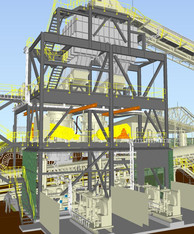


Little P.Eng. Engineering’s Bulk Material Handling Team is a dynamic and diverse group with experience in conveying systems – mechanical and pneumatic; chutes transfers, dust control & collection, etc. Our experience in material handling for the power and manufacturing industries will provide rapid development of realistic concepts, and reliable designs which optimize operating and maintenance cost for your project. Our goal will be to not only deliver successful design to the field but to provide you with the information you need to make informed decisions to meet your objectives.

Industries served through our Bulk Material Handling Engineering Services
Grains
Mining
Mills
Metals
Manufacturing
Maintenance
Fabrication
Agriculture
Packaging
Safety
Fire & Explosion
Ship/Barge Loading & Unloading
Steel and Metals Industry
Energy and Power Generation Industry
Water and Wastewater Industry
Oil & Gas Industry
Chemicals and Plastics Industry
Pulp & Paper Industry
Facility Services
Residential Buildings Sector
Hospitality and Hotel Sector
Commercial Buildings Sectors
Sports and Stadia Buildings Sector
Education Buildings Sector
Government Buildings Sector
Hospitals Engineering Services
Biotech / Pharmaceutical – Engineering Services
Food & Beverage – Engineering Services
We offer the following Engineering Services within our Bulk Material Handling Engineering Services :
Discrete Element Modeling (DEM)
Calculation based modeling
Allows for visualizing results
Particle velocity
Forces (shear and normal) and moments (bending and torsional)
Acceleration and material scatter
More than just flow simulation of bulk materials
wear Patterns
Mixing
Center loading
DEM Benefits
Reduced Dust Levels
Reduced Noise
Reduced Chute Plugging
Better Conveyor Tracking (Center Loading)
Reduced Belt Cover Wear
Reduced Chute Wear
Reduced Equipment Wear
Structural Engineering Services
Foundation Design
Concrete Structure Design
Steel Structure Design
Piping Engineering Services
Bulk material handling engineering specifically focuses on the design, processing, and transportation of bulk materials, which can include items such as ores, coal, minerals, and grains, among others. These materials often present unique challenges due to their bulk nature, including issues related to flowability, abrasiveness, corrosiveness, weight, and other specific characteristics. Here are the various aspects of bulk material handling engineering services:
Storage Solutions:
Design and layout of silos, bins, and stockpiles
Assessment of material flow properties to reduce issues like bridging or rat-holing
Conveyor Systems:
Design and optimization of belt, screw, chain, and pneumatic conveyors
Selection of appropriate conveyor belts, idlers, and drives
Loading and Unloading Systems:
Railcar and truck loading/unloading facilities
Ship and barge loading/unloading equipment
Reclaiming Systems:
Design of stacker-reclaimers, bucket wheel reclaimers, and scraper reclaimers
Size Reduction Equipment:
Crushers, grinders, and milling equipment
Sizers and chutes to manage particle sizes
Screening and Sorting:
Vibrating screens, trommels, and sorters
Density separation using jigs or cyclones
Feeding and Metering Equipment:
Feeders for accurate and controlled material flow
Rotary valves, weigh feeders, and volumetric feeders
Material Transfer:
Chutes, hoppers, and gates
Transfer tower and junction house design
Dust Control and Suppression:
Dust collection and filtration systems
Wet suppression and foam suppression systems
Safety and Environmental Considerations:
Explosion and fire protection in dusty environments
Erosion control and spill prevention
Flow Aids and Devices:
Vibrators and air cannons to aid material flow
Flow liners and internal coatings
Bulk Material Testing:
Evaluating flowability, abrasiveness, and other material properties
Moisture content and material density testing
Rail and Marine Infrastructure:
Rail siding design and layout
Port and harbor infrastructure for bulk material export/import
Automation and Controls:
Automated monitoring of material levels in bins and silos
Control systems for conveyor speed, material flow, and routing
Maintenance and Wear Protection:
Wear liners and abrasion-resistant materials
Maintenance strategies and schedules
Bulk Material Transport:
Pipeline transport for slurry and other bulk fluids
Pneumatic transport systems for powders and granules
Economic Analysis:
Cost estimation for bulk material handling projects
Return on investment (ROI) calculations
Regulatory Compliance and Standards:
Ensuring designs meet relevant industry standards
Adherence to safety and environmental regulations
Continuous Improvement and Upgrades:
Evaluation of existing systems for performance enhancement
Retrofitting and upgrading older infrastructure
Consultation and Advisory Services:
Providing expertise on specific bulk material challenges
Assisting with vendor and equipment selection
Given the unique nature and challenges of handling bulk materials, these services are essential to ensure efficient, safe, and economical processing, transportation, and storage. Properly designed and managed systems reduce product loss, minimize environmental impacts, and ensure safety while optimizing costs.
Tags:
Little P.Eng. Engineering
Structural design
Compliance
Mechanical design
Energy efficiency
Single-boom spreaders
Bulk material transfer
Bulk material transport
Client-centric approach
Environmental impact
Material handling
Treatment facilities
Conveyor systems
Infrastructure design
Pneumatic transport
Refining
Material grading
Transfer points
Dust suppression
Material contamination
Bulk material degradation
Silo design
Loading docks
Workflow optimization
Advanced ventilation systems
Risk assessment
Sustainable engineering
Material integrity
Client testimonials
Automation in material handling
Bulk Material Handling & Processing
Engineering Services
Structural Engineering Consultancy
Located in Calgary, Alberta; Vancouver, BC; Toronto, Ontario; Edmonton, Alberta; Houston Texas; Torrance, California; El Segundo, CA; Manhattan Beach, CA; Concord, CA; We offer our engineering consultancy services across Canada and United States. Meena Rezkallah.
#•#Little P.Eng. Engineering#Structural design#Compliance#Mechanical design#Energy efficiency#Single-boom spreaders#Bulk material transfer#Bulk material transport#Client-centric approach#Environmental impact#Material handling#Treatment facilities#Conveyor systems#Infrastructure design#Pneumatic transport#Refining#Material grading#Transfer points#Dust suppression#Material contamination#Bulk material degradation#Silo design#Loading docks#Workflow optimization#Advanced ventilation systems#Risk assessment#Sustainable engineering#Material integrity#Client testimonials
0 notes
Text
I don't drive for multiple reasons, and disablily is certainly one of them. I have (probably autism-related) chronic low energy levels and simply don't trust myself to stay awake and alert enough to be a responsible driver. Luckily I live in the Nederlands and living without a car is not a problem, thanks to good enough biking infrastructure, walkability and public transport. I'm so happy about that. Lower emissions, lower costs and frequent outdoor exercise are all other benefits of not owning a car
Cities with less cars are also just so much more pleasant to be in? Let me intruduce you to the Dutch word 'autoluw'. It basically means: streets without cars except those who have good reason to be there: cars of people who actually live there, emergency vehicles, delivery vans, shuttle services.
For anyone who wonders what that may look like, or who has concerns about it, this video adresses those pretty well:
youtube
The thing is about cars is that most people wouldn’t need them if infrastructure was built for people instead of cars.
And when people bring up disabled people as a gotcha on this subject I feel like they forget that a) there’s a lot of disabled people who can’t drive and who would get more independence from more walkable cities and accessible transit and b) the disabled people who actually do need to drive and anyone else who actually has a good reason to own a car could get where they’re going a lot safer and with less stress if there were less people on the roads.
#cars#walkability#cities#urban design#bike infrastructure#public transport#I have so much thoughts on this lol#great post OP#Youtube
5K notes
·
View notes
Text
U.S. Bus Market Will Reach USD 11,237.7 Million By 2030
The U.S. bus market is projected to be USD 11,237.7 million by 2030 growing at a CAGR of 4.7% during the forecast period. This growth can be credited to the fast urbanization and increasing populace, armed with the growing government investments in the advancements of public transport vehicles. Furthermore, the obtainability of federal, state, and local funding and the existence of a huge count of school buses boost industry development.

In recent years, the school buses category had the largest revenue share, approximately 55%, and the category is also projected to remain dominant in the future as well. This development can be credited to the fact that these buses are the largest form of mass transport in the nation.
Almost 480,000 school buses were on the roads in recent years in the U.S., outnumbering transit buses around 7 to 1. Moreover, the rising acceptance of E-buses for school purposes advances the industry in this category in the U.S.
To receive free sample pages of this report@ https://www.psmarketresearch.com/market-analysis/us-bus-market/report-sample
Public transport holds the capability to enhance air quality, traffic safety, accessibility, and active transportation, and also personal well-being advantages. Public transportation utilizes less fuel and releases lower levels of unstable organic composites, carbon dioxide, and carbon monoxide per passenger mile compared to private vehicles. Along with the ecological aids, it has significantly lesser crash rates and lower crash harshness than automotive travel.
The electric propulsion category is estimated to advance at the highest CAGR, of approximately 30%, during the projection period, on the basis of revenue. This is mainly because the usage of electric buses in the nation was approximately 1.6% of the nation’s total bus sales in recent years, and the share of e-buses in public fleets is constantly growing.
Additionally, several public transportation agencies have contracted contractual orders with electric bus builders for obtaining electric buses.
Hence, the fast urbanization and increasing populace, armed with the growing government investments in the advancements of public transport vehicles are the major factors propelling the U.S. bus market.
#U.S. bus market#Public transportation#Urban mobility#Bus fleet electrification#Sustainable transit solutions#Smart bus technologies#Mass transit systems#Transit infrastructure#Transportation trends#Electric buses#Clean energy initiatives#Market players#Mobility as a Service (MaaS)#Bus manufacturing#Infrastructure investment#Future of public transportation#Emissions reduction#Passenger safety#Market growth#Innovative bus designs.
0 notes